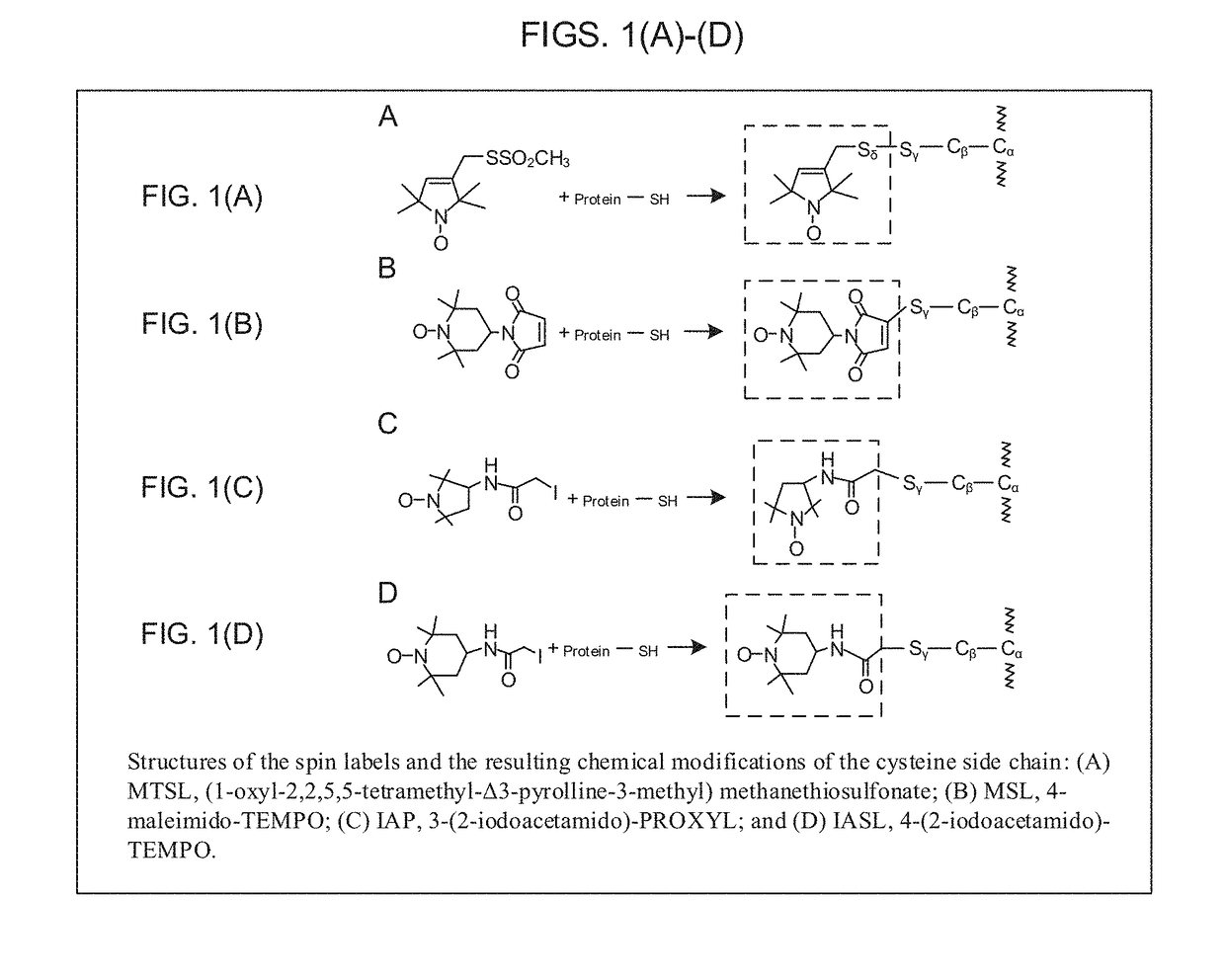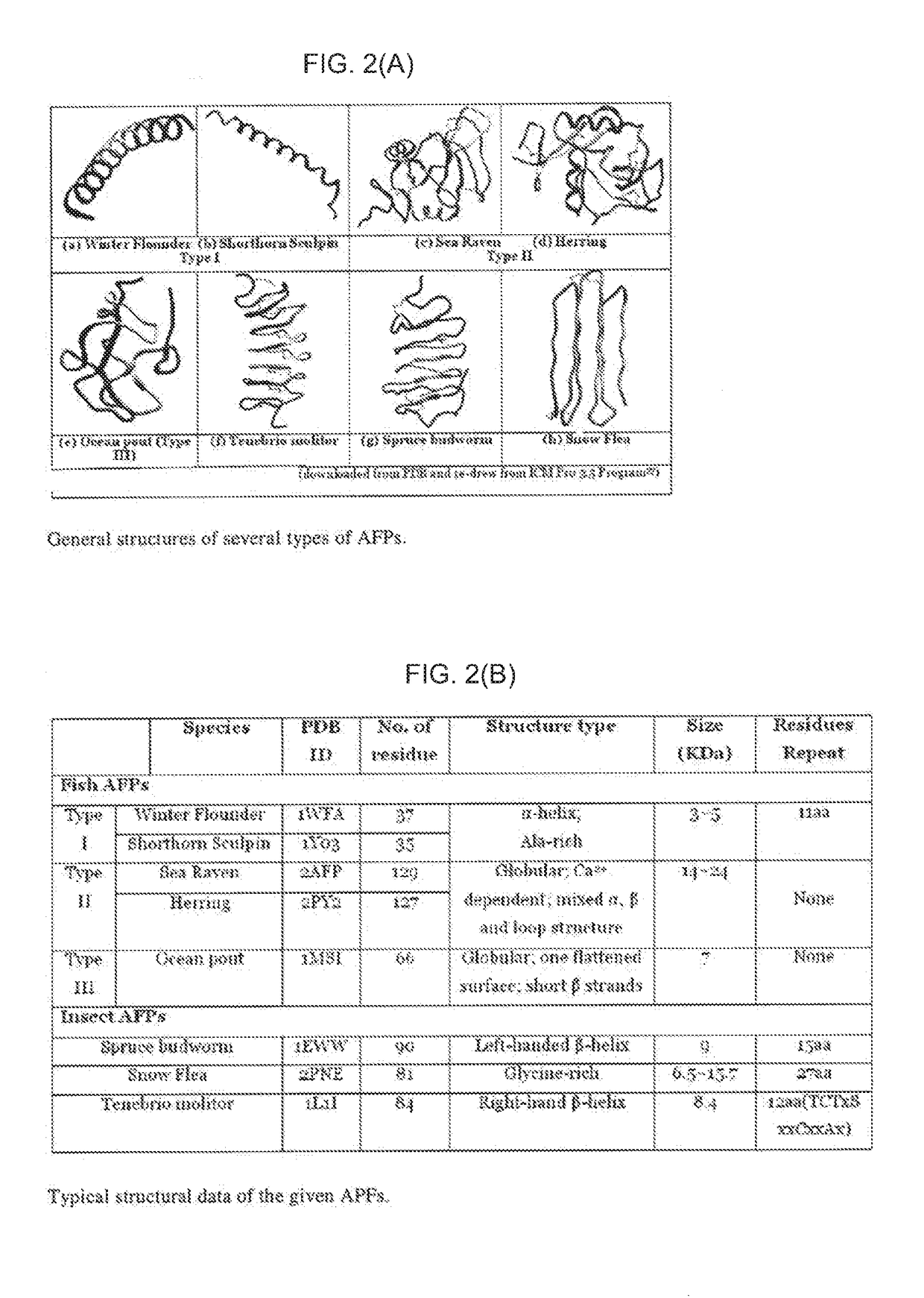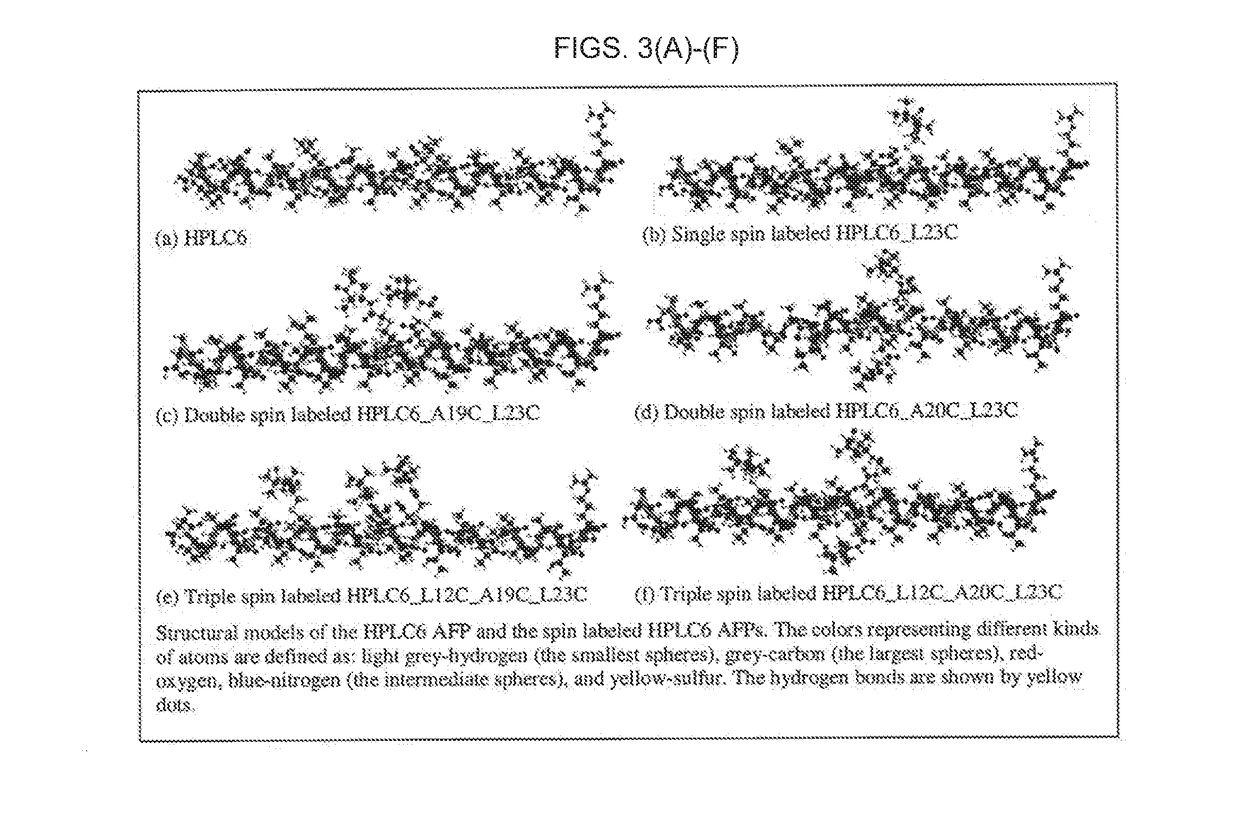Electron Spin Labeled Ice Binding Compounds Used For Carrying Paramagnetic Centers For Dynamic Nuclear Polarization
a technology of paramagnetic centers and ice binding compounds, which is applied in the direction of peptide sources, chemistry apparatus and processes, and peptide sources, etc., can solve the problems of low sensitivity of nmr for high throughput applications, limited solvent requirements for many biological applications, and use of water and glycerol mixture as solvents, etc., to effectively polarize the nuclear spin, inhibit the growth of seed ice crystals and the recrystallization of ice crystal
- Summary
- Abstract
- Description
- Claims
- Application Information
AI Technical Summary
Benefits of technology
Problems solved by technology
Method used
Image
Examples
example 1
imental Results of Single and Double Spin-Labeled HPLC6 Peptides Using the IAP Reagent
[0052]We have synthesized the single spin-labeled HPLC6_L12 and double spin-labeled HPLC6_A20C_L23C using the IAP reagent. The EPR spectra of their water solutions at different temperatures are shown in FIG. 7. The line shapes at the temperatures above the freezing points (298 K and 273 K) showed the typical triplet patterns of the nitroxide radicals. When the temperature was lowered below the freezing point, slow motion patterns of the line shapes began to appear, showing that the motions of the spin-labeled side chains are severely restricted after the spin-labeled IBPs were frozen in the ice matrices. The line shapes continued to become broader down to 90 K, indicating increased restriction of motions of the spin-labeling groups. Then, the line shapes stayed similarly at lower temperatures. These experiments indicate that 90 K could be sufficiently low enough to perform DNP experiments. It is im...
example 2
Native Functional Groups of HPLC6 Isoform of Type I AFP
[0053]This AFP has the following sequence: Asp-Thr-Ala-Ser-Asp-Ala-Ala-Ala-Ala-Ala-Ala-Leu-Thr-Ala-Ala-Asn-Ala-Lys-Ala-Ala-Ala-Glu-Leu-Thr-Ala-Ala-Asn-Ala-Ala-Ala-Ala-Ala-Ala-Ala-Thr-Ala-Arg [SEQ ID NO:1], where the ice binding residues are underlined and the residues preferred for performing spin labeling are bolded. The bolded residues include lysine, arginine, glutamic acid and aspartic acid residues. Using these residues, single spin-labeled through spin labeling Lys or Arg side chain, double spin-labeled through spin labeling Lys and Arg side chain, and triple spin-labeled through spin labeling Asp, Asp and Glu side chains, etc., type I AFPs can be synthesized.
example 3
Native Functional Groups of the QAEop12 Isoform of Type III AFP
[0054]This protein has the following sequence:
[SEQ ID NO: 2]MNQAS VVANQ LIPIN TALTL VMMRS EVVTP VGIPAEDIPR LVSMQ VNRAV PLGTT LMPDM VKGYA A
where the residues involved in the putative ice binding surfaces are underlined and the available non-ice binding residues for performing spin labeling are bolded. They include lysine (K), arginine (R), glutamic acid (E), aspartic acid (D) and tyrosine (Y) residues. Using these side chains, single spin-labeled (using K or Y), double spin-labeled (using K and Y) and multiple spin-labeled (using R, R, R for making triple spin-labeled, using E, E, D, D for making quadruple spin-labeled, etc.) type III AFPs can be synthesized.
PUM
 Login to View More
Login to View More Abstract
Description
Claims
Application Information
 Login to View More
Login to View More - R&D
- Intellectual Property
- Life Sciences
- Materials
- Tech Scout
- Unparalleled Data Quality
- Higher Quality Content
- 60% Fewer Hallucinations
Browse by: Latest US Patents, China's latest patents, Technical Efficacy Thesaurus, Application Domain, Technology Topic, Popular Technical Reports.
© 2025 PatSnap. All rights reserved.Legal|Privacy policy|Modern Slavery Act Transparency Statement|Sitemap|About US| Contact US: help@patsnap.com



